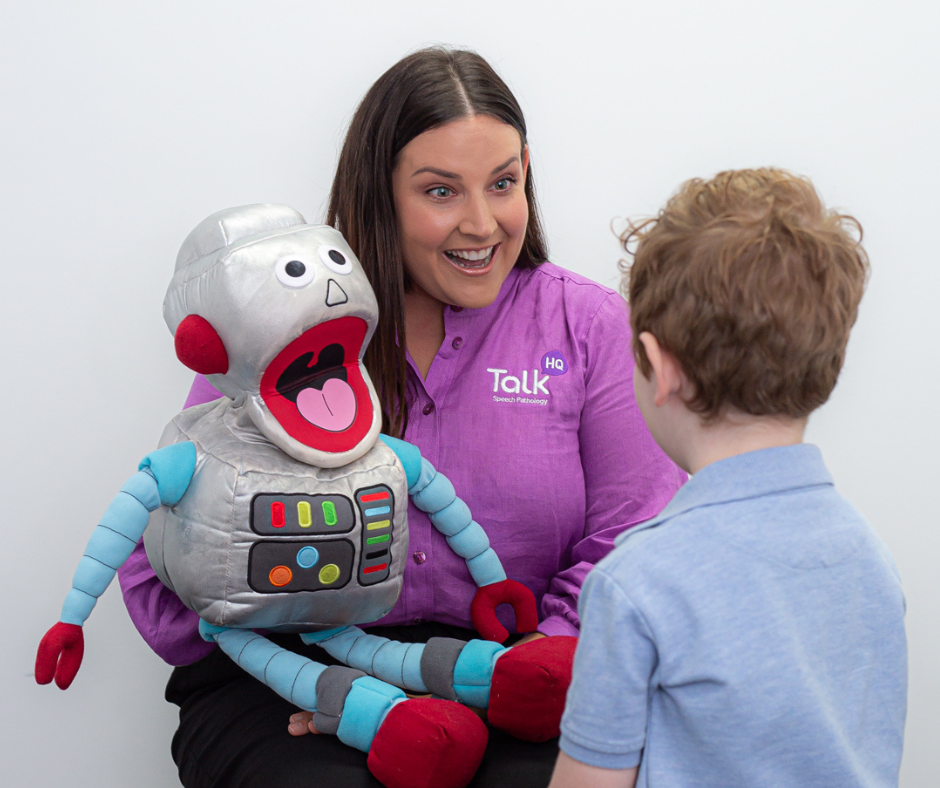Speech pathologists are generally caring, empathetic people; we just want to help with everything! One of the biggest conundrums we face is when our clients have so many goals we need to decide where to start therapy! Early in my career, I tried to include too many goals in my therapy sessions. As a result, I found that progress took a lot longer! In fact, targeting too many goals at once was overwhelming for clients and made the therapy journey discouraging. Goal-setting for clients with complex needs can sometimes be a daunting process. Here are my top tips to help you with the goal-setting process so you can work out the best place to start.
1. Remember the ZPD!
Zone of Proximal Development, ZPD, is something we all learn about at uni, but I think is easy to forget about. Basically, it refers to the skill level that sits between the child not being able to do the task and the child being able to do the task independently.
Choosing goals using ZPD means choosing goals that the child would be able to achieve with assistance from someone who has the skills or expertise to guide their learning, that is, a speech pathologist.
Your sub-goals may then reflect the different levels of scaffolding that may be required to help the child progress to mastery. It all depends on the needs of the learner.
Therefore, when your client has many possible goals to work on, start with a goal that the child is close to mastering with guidance and encouragement from you and/or the parent. Often, the best starting goals are things that clients can do with some help!
2. Function first
When goal setting for complex clients, we really want bang for our buck! I can’t count the number of families who have wanted their children to be polite and say ‘please’ and ‘thank you’, but we know that this is not much good if they can’t say, ‘drink’ or ‘help’.
It helps to think about the reasons WHY we need to communicate. That is, to request, to protest, to draw attention to something, to join in social interactions etc.
When considering targets, in particular language targets, choose goals that will help them achieve functional language skills. Aim for word-learning of high-frequency vocabulary that can be used across several interactions. Even though there may be many areas that child needs help with, what one to two things will help them function/participate better at home or school? Can you identify a language function that would help them in more than one situation? For example, targeting personal narrative skills can help them build friendships at school as well as use tier-two vocabulary in a meaningful way! It can also help with the child’s conversation skills with their parents as they are often asked, “How was your day at school?” Goals that build functional communication are a great place to start!
3. Motivation is key
Remember that your goal-setting will be a key factor in determining how motivated the client is in therapy. My mum taught me, ‘You can lead a horse to water, but you can’t make it drink!’ As a new graduate, I tried working on many goals that I judged as “helpful” for the client. Sometimes, the client didn’t understand how those goals would benefit them. Sometimes the outcomes I was aiming for weren’t a high priority for the client.
One way to motivate clients is to involve them in setting their own goals. This way, they will be more likely to engage in the therapy process and see results. I always start by collaborating with my clients about their desired outcomes.
I ask questions so that I can get a clearer understanding of how their communication difficulty is affecting their day-to-day functioning. Some examples of things I ask parents include:
“How is Johnny’s speech sound disorder affecting his ability to communicate at kindy?”
“What does it look like when Harry can’t get his message across?”
“How often is this an issue?”
“Does this impact the family’s ability to go places?”
“If speech pathology was going to help Sarah in one particular part of her day, what would you want that to be?”
These types of questions help me to understand the impact of the child’s communication disorder. It also helps me identify which goals are most important to the client and their family. Therefore, this information allows me to tailor my goal-setting and therapy approach accordingly. When explaining each session goal, I refer to how it will help the child progress towards our agreed desired outcome. I find this process helps maintain the motivation for attendance, engagement during sessions and home practice. Ultimately, motivation is key to helping speech pathology clients reach their goals.
4. Regularly check in to see if the chosen goals are still a priority for the client/family.
Therapy is a dynamic process. Setting goals at the start of a child’s therapeutic journey does not mean you can only target those specific goals. It is important that you are responsive to the child and their family’s needs.
You need to stipulate a time frame for reviewing goals. At TalkHQ, we do this at least once each school term. We spend time with the carer/parent to review the goals that were chosen at the beginning of the Talk Block. We want to see if the goals targeted in therapy have a functional impact on the child’s day-to-day activities. Also, the family can communicate whether or not those goals continue to be a priority for the client/family.
This step is imperative to ensure that your therapy goals are synchronous with the family’s desired outcomes.
Written by Julie Sexton, CEO and Senior Speech Pathologist







